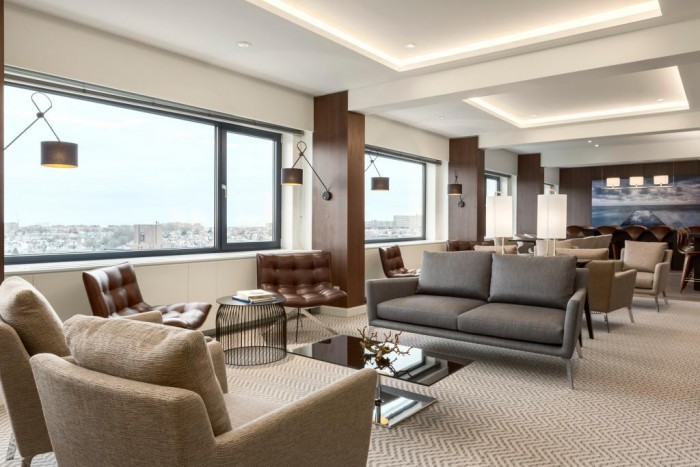Q&A with Harry Gregory, ara Design
Harry has over 35 years’ experience in designing hotels, restaurants and private residences worldwide, and his knowledge of the sector is second to none.
After graduating from the Royal College of Art, Harry worked on product design and later specialised in furniture design at Dale Keller & Associates. He then went on to form GA Design in London, incorporating his product expertise into interior architectural design. It was there that he met Andre, and acknowledging their complementary work patterns, and mutual desire to create a truly bespoke experience for clients, they co-founded ara Design to deliver just this.
Having first-hand knowledge of emerging trends in the design industry, and a covetable internationally travelled passport (or two!), Harry has a detailed understanding of local culture and how this translates into world class design. He always has an enjoyable, and accessible project design process, forming solid and enduring client relationships along the way.
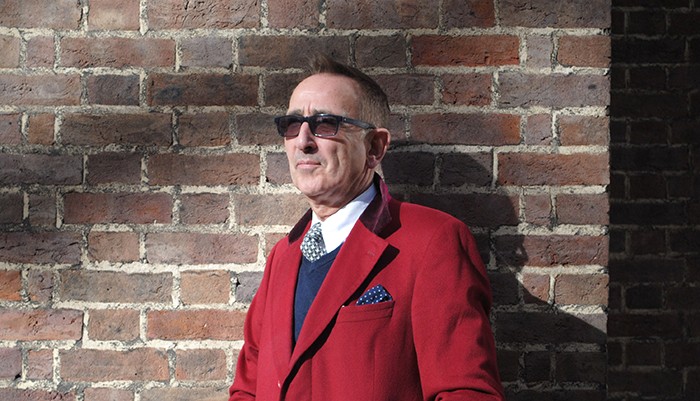
How did you get in to design and what fascinates you?
Sounds corny but my favourite subject in school was art, which I seemed to be pretty good at. That then led to Edinburgh College of Art and in turn to Royal College of Art where I obtained an MA in furniture design. My first job was furniture designer at Dale Keller and Associates back in 1977. After a few years I co-founded GA design and moved into hospitality interior design.
Having been in business for so long I am fascinated how hospitality interior design has changed and evolved. What really interests me is how hotels have become far more relaxed, informal and social. And there has always been a colour! Colour fascinates me and is obvious in most of my designs.
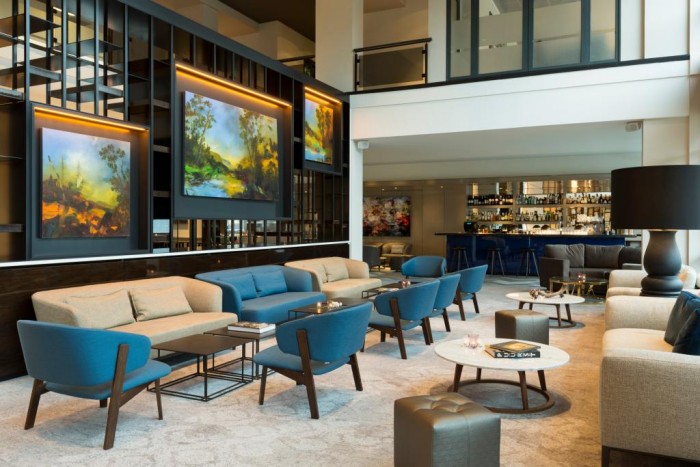
In your recent project Hague Bel Air you have focused on the social aspects of design why is this important and how have you seen lobbies like these changed over the years?
Leading on from the changes in the Industry, hotel lobbies and public spaces are now more of a meeting points and social hubs where guests and visitors alike can relax, entertain, mingle and work at the same time. Technology has perhaps played a big part in this social change amongst operators and designers.
“Technology has perhaps played a big part in this social change amongst operators and designers.”
Prior to this lobbies where used to be divided into lobby lounge, bar and restaurant with its own obvious purpose and quite segregated. Of course there is still room for a more traditional hotel set up but maybe these are more of a minority in 21st century.
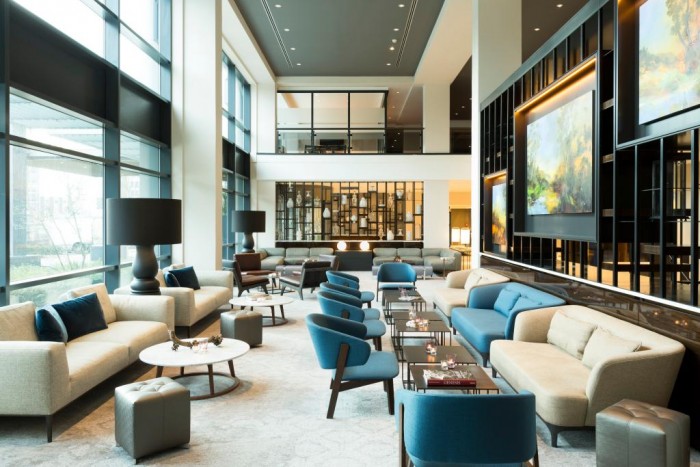
What was the inspiration behind the Marriott Hotel, The Hague Bel Air?
The main inspiration behind this project was purely geographical location. The Hague is a city on the North Sea coast of the Western Netherlands. Cosmopolitan and cultured, The Hague is Holland’s third-largest town after Amsterdam and Rotterdam. The close proximity to the North Sea provided the colour palette of greys and blues and also provided the inspiration for the guestroom and Public Area design.
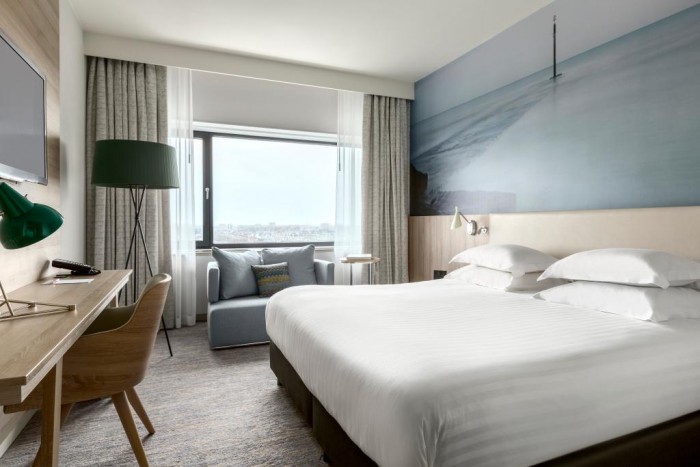
This colour scheme became the integral language and DNA for our design and is carried throughout the Hotel.
Also the user was always in our focus. We were thinking about how people use spaces. That is why we designed organic flow table in Executive Lounge. The shape of the table is very fluent and you can use it for meeting and socialising. You also have power sockets built-in within the piece so you can also work and network at the same time.
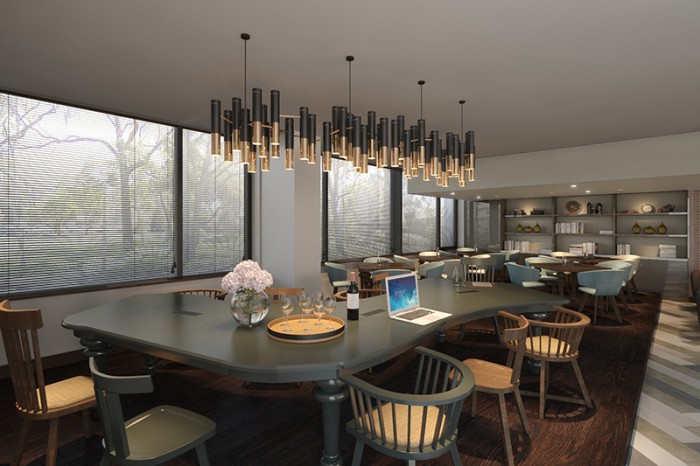
Where do you go for inspiration when designing spaces?
Inspiration or rather visual thinking is all around you wherever you are. Whether it is a local high street, restaurant, theatre, museum or even a friend’s house. There is something to trigger your imagination. It really is a case of how one uses one’s eyes.
Moreover we are constantly streaming on our social medias and online blogs. It is crazy how much inspiration you can get from there. In the past we had Designers Saturdays, we actually have Alan Fletcher’s poster in our office in communal area, organised and addressed to designers to get inspired. Now all we need is to switch our phone and we can go through portfolio of a chap in LA. However one needs to be careful not to become too attached to ongoing trends as they tend to change very rapidly.
On Design Insider this month we are focusing on “TRANSITION” of spaces, what are your thoughts on how hospitality design is influencing all other sectors? Incl education, office and healthcare?
“The main influence is not coming from hospitality but from the way we are changing as human beings.”
I think the main influence is not coming from hospitality but from the way we are changing as human beings. There is a great book by Alex Steffen Worldchanging: A User’s Guide for the 21st Century. Fantastic read packed with information how we have changed and what it is we need to build better future. Bombarded by newest trends in technology at the same time we do become more eco-friendly, tend to shop locally, travel, live, work, and learn in world-changing ways. That refinement of mindset has a knock on effect on every industry including interior design as well. Making spaces more open. For instance in healthcare (care homes) there is certainly a move towards more luxurious, open but at the same time residential style interiors. Schools and libraries are becoming more interactive with their internal space, making room for new responsive interiors . Offices tend to stop using dividers between employees but inspire to use communal tables and gathering spaces to chill, come up with ideas and brain storm. Communal tables high and low-level are now quite popular in restaurants and bars but as well in other hospitality sector. And I am sure further changes are coming our way.
